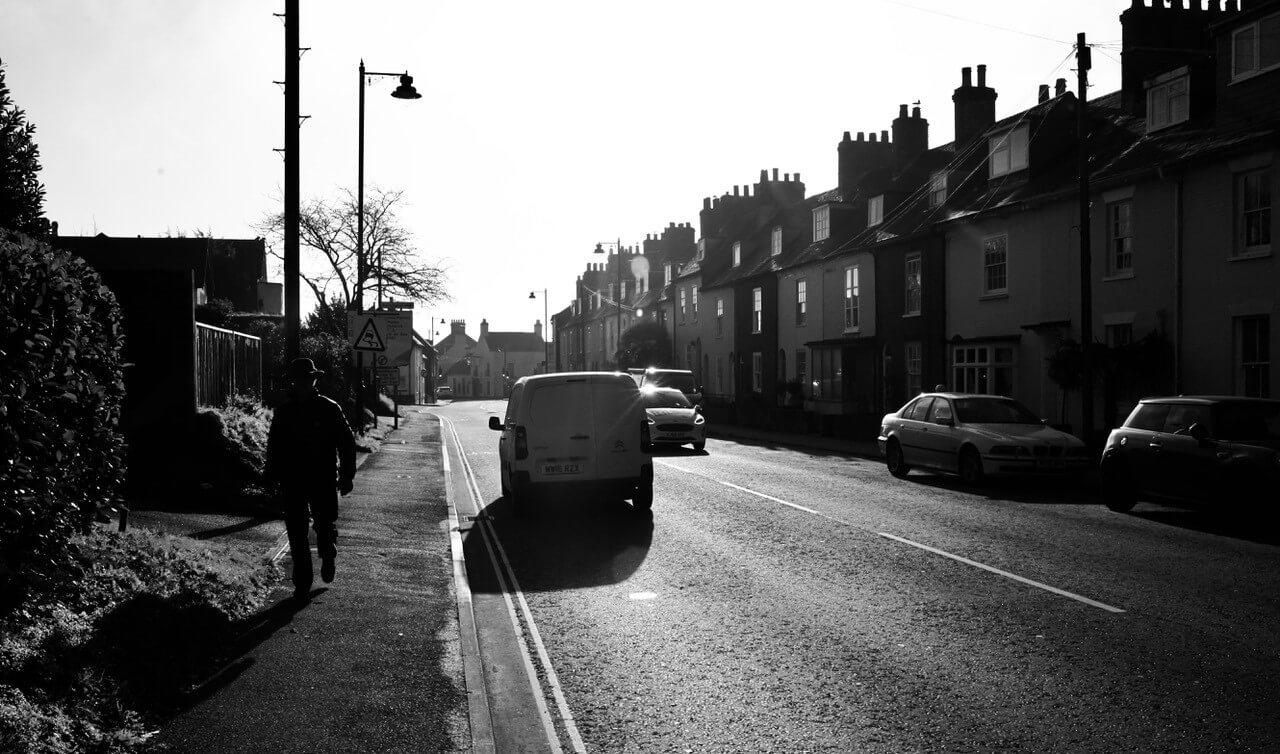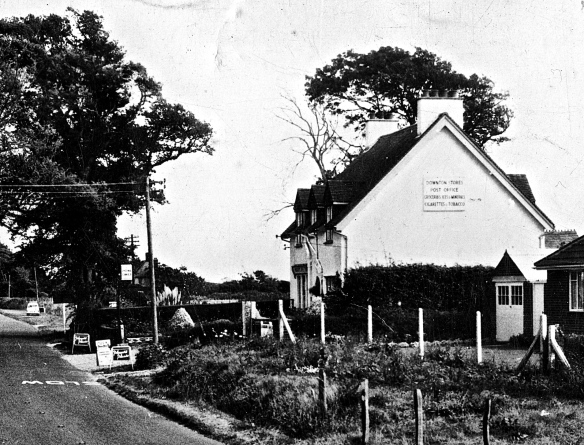Bright sunshine lifted the lingering morning mist as we set off for a short forest drive today.


Shafts and shadows streaked across Jordan’s Lane, where

our path was soon blocked by a driverless tractor, the cab of which was

soon occupied by a man who drove it on its way, complete with trailer.


Distant tree lines alongside Shotts Lane remained somewhat hazy.

The colourful Georgian terrace of Southampton Road with its clusters of

towering chimneys at its point of departure from Lymington has often attracted me, but it is not a place to stop the Modus.
Today I regretted not making an exception, so Jackie drove around the block and parked in a side road while I walked back.

You may be able to spot the gentleman approaching me on the left hand pavement.

He proved to be another man who, in the days of film, had turned his kitchen into a darkroom in order to print black and white images with trays of chemicals and an enlarger poised on the daytime work surfaces while black sheets covered available windows.
We had an enjoyable reminiscing session, in which he explained that he had a large collection of black and white photographs that he really ought to “move [his] butt” to print. I informed him that the only real editing I carried out with my digital photography was cropping and converting to black and white.

I hope I had inspired him to take up his printing once more as he inspired me to produce these converted images.
The uncropped version of this 1982 portrait of Becky first published in 2014 has not yet been recovered from WordPress, but I include this header picture of her eyes from a later post as an example of a print of such a size that I needed to project the enlarger onto the floor to produce it.
Late this afternoon, having collected Dillon from Heathrow, our daughter delivered him and his young family back home and returned to her own in Southbourne.
We dined on tender roast pork, crisp Yorkshire pudding and roast potatoes, crunchy carrots, firm cauliflower and Brussels sprouts, and meaty gravy, followed by a spicy pumpkin pie which Jackie had baked in honour of Dillon’s return. She drank Hoegaarden and I drank more of the Gran Selone.





























